Dutch artist MC Escher’s trippy art hits Melbourne for NGV as five fans give their faves
Step into the fantastical world of Escher at the NGV’s new exhibition after finding out the favourite pieces of some key fans.
VIC News
Don't miss out on the headlines from VIC News. Followed categories will be added to My News.
Mind-bending optical illusions will baffle art fans as part of the National Gallery of Victoria’s summer blockbuster.
It’s the first time a major display of work by Dutch graphic artist Maurits Cornelis Escher will be seen in Australia.
NGV ANNOUNCES ESCHER X NENDO SUMMER BLOCKBUSTER
WHY ESCHER WAS A POP-CULTURE PIN-UP
About 160 prints and drawings, on loan from The Hague’s Gemeentemuseum, will headline the exhibition, with visitors immersed in a space created by Japanese design studio, nendo.
Escher x nendo: Between Two Worlds plays with geometry, space and perception to dazzle visitors with staircases to nowhere and hands drawing themselves.
We asked five key exhibition allies for their favourite Escher.

Tony Ellwood, NGV director
Snakes (1969)
“This is Escher’s last print, which took him months of exhaustive work when he was quite unwell and waiting to undergo another operation. Yet it’s a magnificent tour de force, both technically and aesthetically, in which he presents a new visual solution to his lifelong interest in representing infinity.”
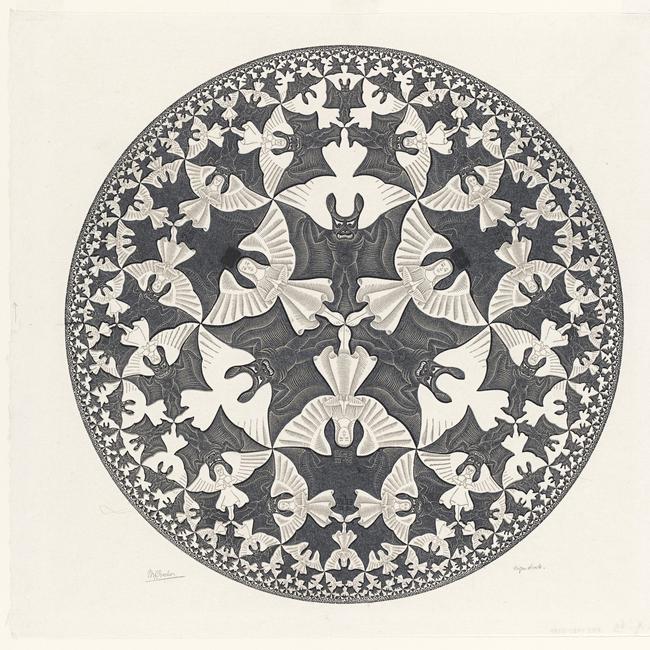
Eddie Woo, maths genius
Circle Limit IV (1960)
“This woodcut uses a common visual technique — a tessellation, or repeating pattern, that is frequently seen in tiling designs — and puts an intriguing geometric spin on it. Circle Limit IV marks one of Escher’s explorations into a branch of mathematics called ‘hyperbolic geometry’, which helps us understand the twists and turns of curved surfaces. These look beautiful, but are also important because of how they shed light on the curvature of space and time itself according to Einstein’s theory of special relativity.”
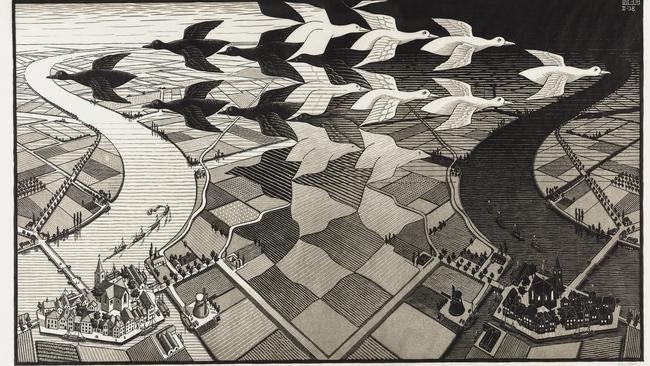
Benno Tempel, Gemeentemuseum director
Day and night (1938)
“The scene is typical for a Dutch landscape with the fields, which I love, but I also love the inventiveness of the man-made environment. The print is completely from somebody’s mind — it’s not a realistic artwork or landscape. This really is made from behind the desk, like The Netherlands was designed behind the desk. The Dutch landscape is not natural. If nature could take its course, we would be swimming here in The Netherlands.”
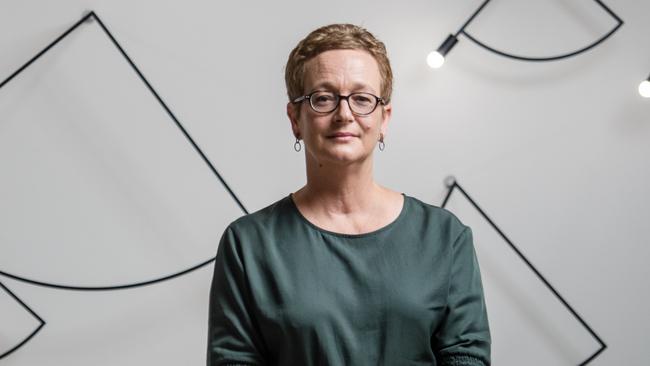

Cathy Leahy, NGV senior curator of prints and drawing
Three worlds (1955)
“This is a great testament to Escher’s consummate craftsmanship and observational skills as shown in the realistically rendered leaves, branches and fish. Yet it also shows his interest in the use of reflective surfaces, in this case the pond’s surface, to unite three different dimensions — the world below the water’s surface (signified by the swimming carp), the world above (signified by the reflected trees), and the surface of the pond itself (signified by the floating leaves).”
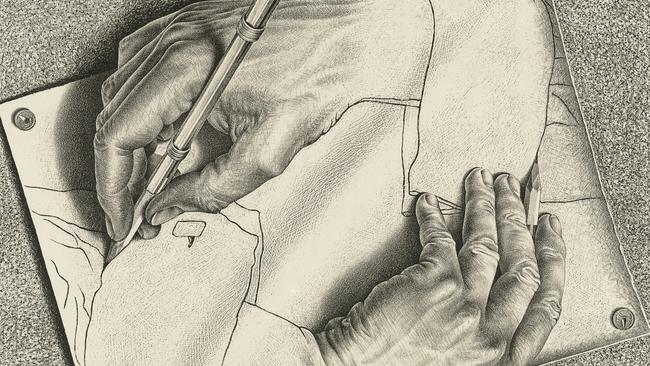
Oki Sato, nendo founder and chief designer
Drawing Hands (1948)
“I love this because it subtly combines a few of Escher’s subjects of interest such as transitions between 2D and 3D and infinite cycles, but at the same time and differently from his other famous prints, it’s documenting his handicraft and skill by showing his own hands in work. Showing the hands drawing themselves is like Escher’s version of the digital Copy + Paste command.”
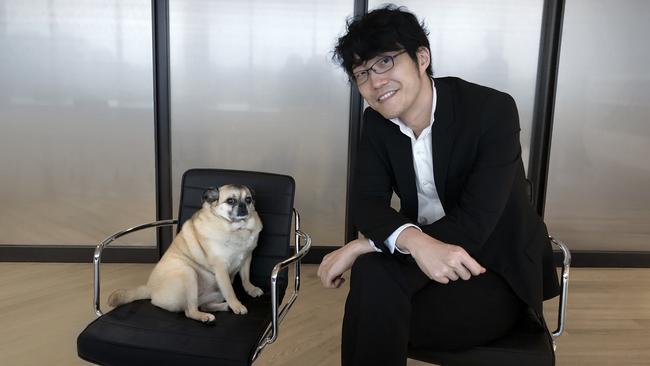
ESCHER X NENDO: BETWEEN TWO WORLDS, NGV INTERNATIONAL, DECEMBER 2-APRIL 7. NGV.VIC.GOV.AU


